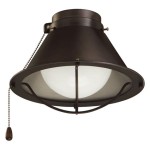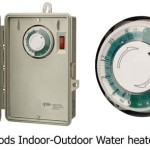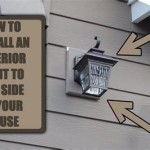How to Clean an Outdoor Griddle
Outdoor griddles have become increasingly popular for their versatility in cooking a wide array of foods, from breakfast pancakes and bacon to stir-fries and burgers. Maintaining a clean cooking surface is critical for optimal performance, flavor, and longevity of the griddle. Grease, food residue, and carbon buildup can negatively impact heat distribution and impart unwanted flavors to subsequent meals. This article provides a comprehensive guide on effectively cleaning an outdoor griddle, covering routine cleaning, deep cleaning, and preventative maintenance.
Routine Cleaning After Each Use
The most effective way to keep an outdoor griddle in prime condition is to perform a quick clean after each use. This prevents the accumulation of hardened grease and burnt food particles, making subsequent cleaning sessions easier and more efficient. The process typically involves scraping, wiping, and oiling the griddle surface.
First, turn off the griddle and allow it to cool down slightly. It is crucial to avoid cleaning the griddle when it is excessively hot, as this can cause burns and potential damage to the surface. A slightly warm surface, however, is ideal, as it will help loosen any remaining food debris.
Next, use a metal spatula or scraper, specifically designed for griddles, to remove any loose food particles and grease. Apply firm and even pressure to scrape the entire surface, pushing the debris towards the grease trap or a designated area for collection. Ensure that the spatula is not too sharp, as this could scratch the griddle's surface. Angle the spatula to effectively lift and remove stubborn residue.
Once the majority of the debris has been scraped away, use paper towels or a clean, lint-free cloth to wipe down the griddle surface. For heavily soiled areas, use a small amount of water to loosen the grease. Apply the water sparingly, as excessive amounts can cause rusting. Use the spatula to spread the water around, effectively lifting and dissolving the remaining residue.
Continue wiping until the surface is relatively clean. At this stage, the griddle may still appear somewhat greasy, which is perfectly acceptable. The final step in routine cleaning involves re-seasoning the griddle, which helps to protect it from rust and maintains its non-stick properties.
To re-season the griddle, apply a thin layer of cooking oil with a high smoke point, such as vegetable oil, canola oil, or flaxseed oil, to the entire surface. Use a clean cloth or paper towel to spread the oil evenly, ensuring that no areas are missed. The goal is to create a thin, protective layer of oil that will prevent rust and enhance the griddle's non-stick performance.
After applying the oil, turn the griddle back on to medium heat. Allow the oil to heat up and smoke slightly. This process, known as polymerization, transforms the oil into a hard, protective coating. Continue heating the griddle until the smoking subsides, indicating that the oil has adequately bonded to the surface.
Turn off the griddle and allow it to cool completely. The griddle is now clean and ready for its next use. This routine cleaning process, performed after each use, will significantly reduce the need for more intensive cleaning sessions in the future.
Deep Cleaning for Stubborn Residue
Despite regular routine cleaning, an outdoor griddle may occasionally require a more thorough deep cleaning to remove stubborn residue, carbon buildup, and accumulated grease. This process typically involves the use of specialized cleaning solutions and more aggressive scrubbing techniques. Deep cleaning frequency will depend on the frequency of use and the types of food cooked on the griddle.
Before commencing a deep cleaning session, ensure that the griddle is completely cool. Attempting to deep clean a hot griddle can be dangerous and may damage the surface. Disconnect the griddle from its power source, if applicable, and remove any detachable parts, such as the grease trap.
Begin by scraping the griddle surface with a metal spatula or scraper, as described in the routine cleaning process. This will remove any loose debris and prepare the surface for the application of cleaning solutions.
Next, apply a specialized griddle cleaning solution to the surface. Several commercially available products are specifically formulated for cleaning outdoor griddles. Choose a cleaner that is non-toxic, food-safe, and effective at removing grease and carbon buildup. Follow the manufacturer's instructions for application and dwell time.
Alternatively, a homemade cleaning solution can be prepared using readily available ingredients. A mixture of water and white vinegar, in a 1:1 ratio, can be effective for loosening grease and grime. Baking soda, mixed with water to form a paste, can be used as a gentle abrasive cleaner. Lemon juice, with its natural acidity, can also help to cut through grease and remove stains.
Regardless of the cleaning solution used, apply it evenly to the griddle surface and allow it to dwell for the recommended time. This will give the solution time to penetrate and loosen the stubborn residue.
After the dwell time, use a heavy-duty scouring pad or a grill brush to scrub the griddle surface. Apply firm and even pressure, working in a circular motion, to remove the remaining residue. Pay particular attention to areas with heavy carbon buildup or hardened grease. Avoid using abrasive cleaners or steel wool, as these can scratch and damage the griddle surface.
Once the surface has been thoroughly scrubbed, rinse it with clean water. Use a sponge or cloth to remove any remaining cleaning solution and residue. Ensure that all traces of the cleaning solution have been removed, as any residue can affect the flavor of food cooked on the griddle.
After rinsing, dry the griddle surface thoroughly with a clean cloth or paper towels. Moisture can lead to rust and corrosion, so it is crucial to ensure that the surface is completely dry before re-seasoning.
Finally, re-season the griddle, as described in the routine cleaning process. Apply a thin layer of cooking oil with a high smoke point, heat the griddle until the oil smokes slightly, and allow it to cool completely. This will protect the griddle from rust and maintain its non-stick properties.
Preventative Maintenance for Longevity
In addition to routine and deep cleaning, implementing preventative maintenance measures can significantly extend the lifespan of an outdoor griddle and ensure its optimal performance. These measures include proper storage, regular inspection, and addressing minor issues promptly.
When the griddle is not in use, store it in a clean, dry location. Exposure to moisture, extreme temperatures, and direct sunlight can damage the griddle and accelerate corrosion. If possible, store the griddle indoors or in a covered area, such as a garage or shed.
Before storing the griddle, ensure that it is completely clean and dry. Apply a thin layer of cooking oil to the surface to protect it from rust. Consider covering the griddle with a protective cover to shield it from dust, dirt, and pests.
Regularly inspect the griddle for signs of damage, such as rust, cracks, or loose parts. Addressing minor issues promptly can prevent them from escalating into more significant problems. If rust is detected, remove it with a wire brush or sandpaper and re-season the affected area. Tighten any loose screws or bolts to ensure the stability of the griddle.
Clean the grease trap regularly to prevent grease buildup and potential fires. Empty the grease trap after each use or when it becomes full. Wash the grease trap with warm, soapy water to remove any remaining grease and debris. Ensure that the grease trap is completely dry before reattaching it to the griddle.
Periodically check the burner tubes and gas lines for leaks or blockages. If a gas leak is suspected, immediately turn off the gas supply and contact a qualified technician. Clean the burner tubes with a wire brush to remove any debris that may be obstructing the gas flow.
By following these preventative maintenance measures, the user can ensure that their outdoor griddle remains in excellent condition for years to come, providing consistent and reliable cooking performance.

How To Clean The Blackstone And Camp Chef Griddle

How To Take Care Of Your Griddle Complete Guide Blackstone S

How To Clean A Blackstone Griddle Pro Housekeepers

How To Clean A Blackstone Griddle The Easy Way

How To Clean A Blackstone Griddle Complete Guide

How To Clean A Flat Top Grill Tips Tricks And What Never Do

How To Clean Blackstone Griddles In 5 Easy Steps Bob Vila

How To Re A Rusty Blackstone Griddle What S The Best Way Remove Rust Resurface

How To Clean A Blackstone Griddle Pro Housekeepers

How To Clean A Blackstone Griddle Livin Life With Lori
Related Posts







